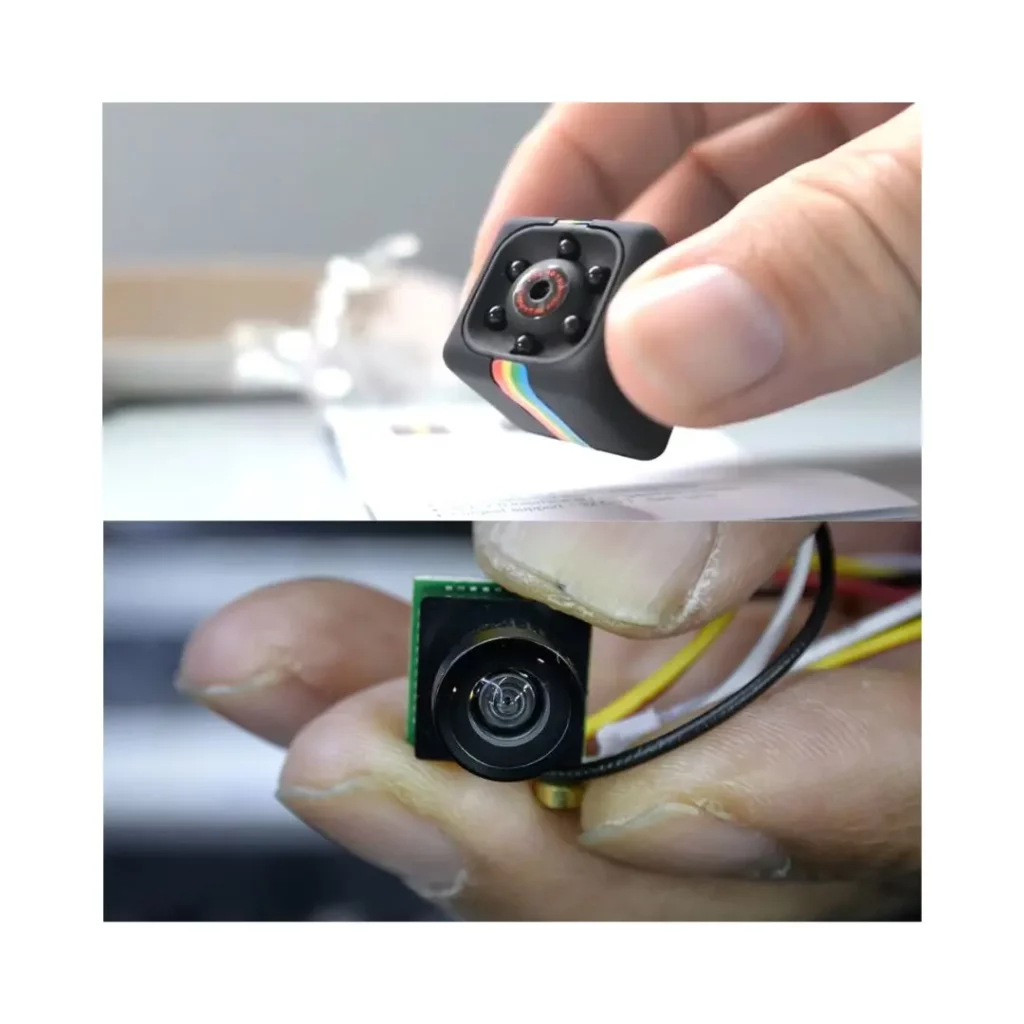Enhancing Security: The Art of CCTV Camera Configuration
Enhancing security and surveillance through effective CCTV camera configuration is crucial for maintaining a safe environment. Proper configuration ensures that cameras capture high-quality footage, cover essential areas, and provide valuable information in case of incidents. Here’s a guide to help you optimize your CCTV camera configuration:
CCTV Camera Placement: Lift CCTV Camera Configuration
- Identify critical areas: Determine the high-risk and vulnerable spots that require CCTV camera configuration, such as entrances, exits, parking lots, and valuable assets.
- Consider lighting conditions: Install CCTV camera where there is adequate lighting for clear visibility during both day and night. Consider adding additional lighting to poorly lit areas.
- Avoid obstructions: Place cameras where they have an unobstructed view of the target area. Avoid placing them behind glass, mesh fences, or other obstacles that might degrade image quality.
Height and Angle: place CCTV cameras at an optimal height to capture faces and details while avoiding vandalism. Tilt cameras downward to focus on areas of interest and to prevent viewing excessive sky or ground.
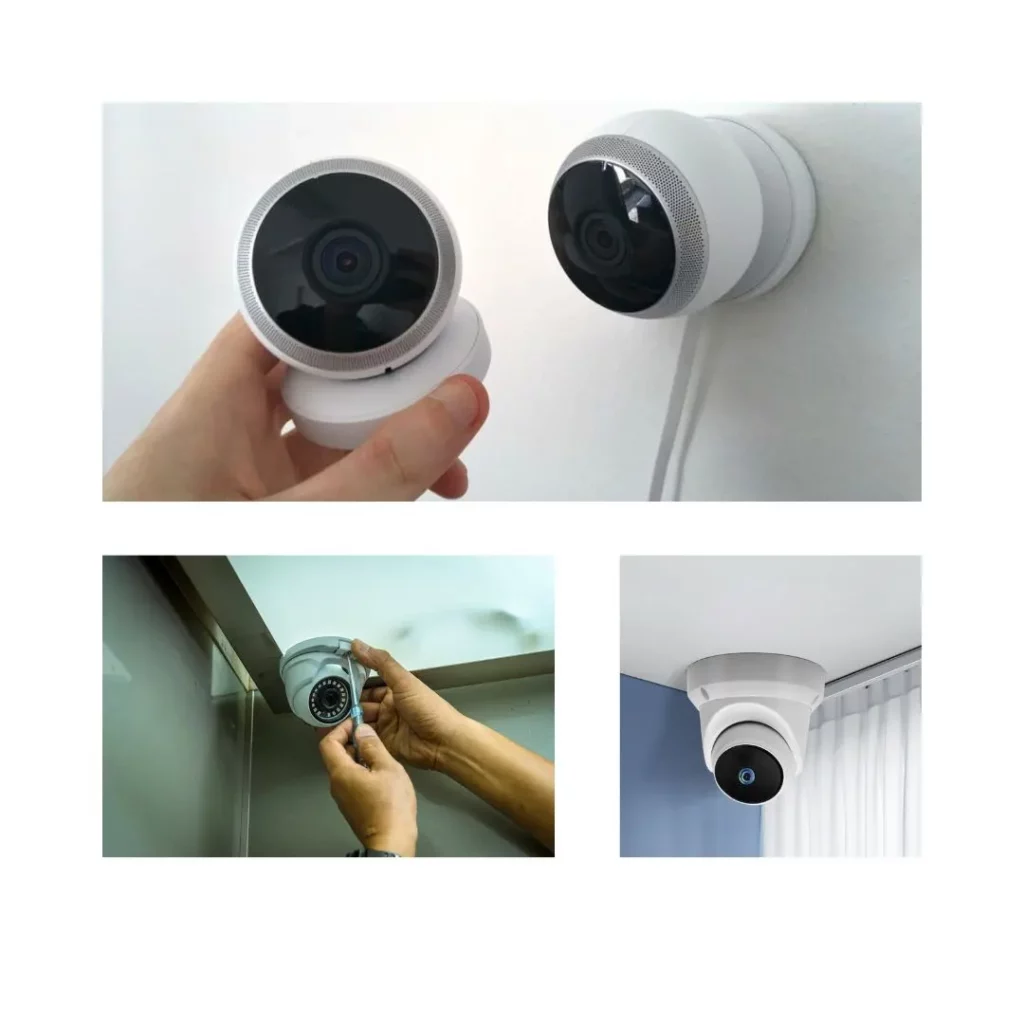
CCTV Camera Settings: Optimize CCTV Camera Configuration
Effective CCTV camera configuration and setting demand a balance between technical knowledge and practical application. The right settings, combined with strategic CCTV camera placement, empower your CCTV camera installation in Dubai to deliver reliable security outcomes.
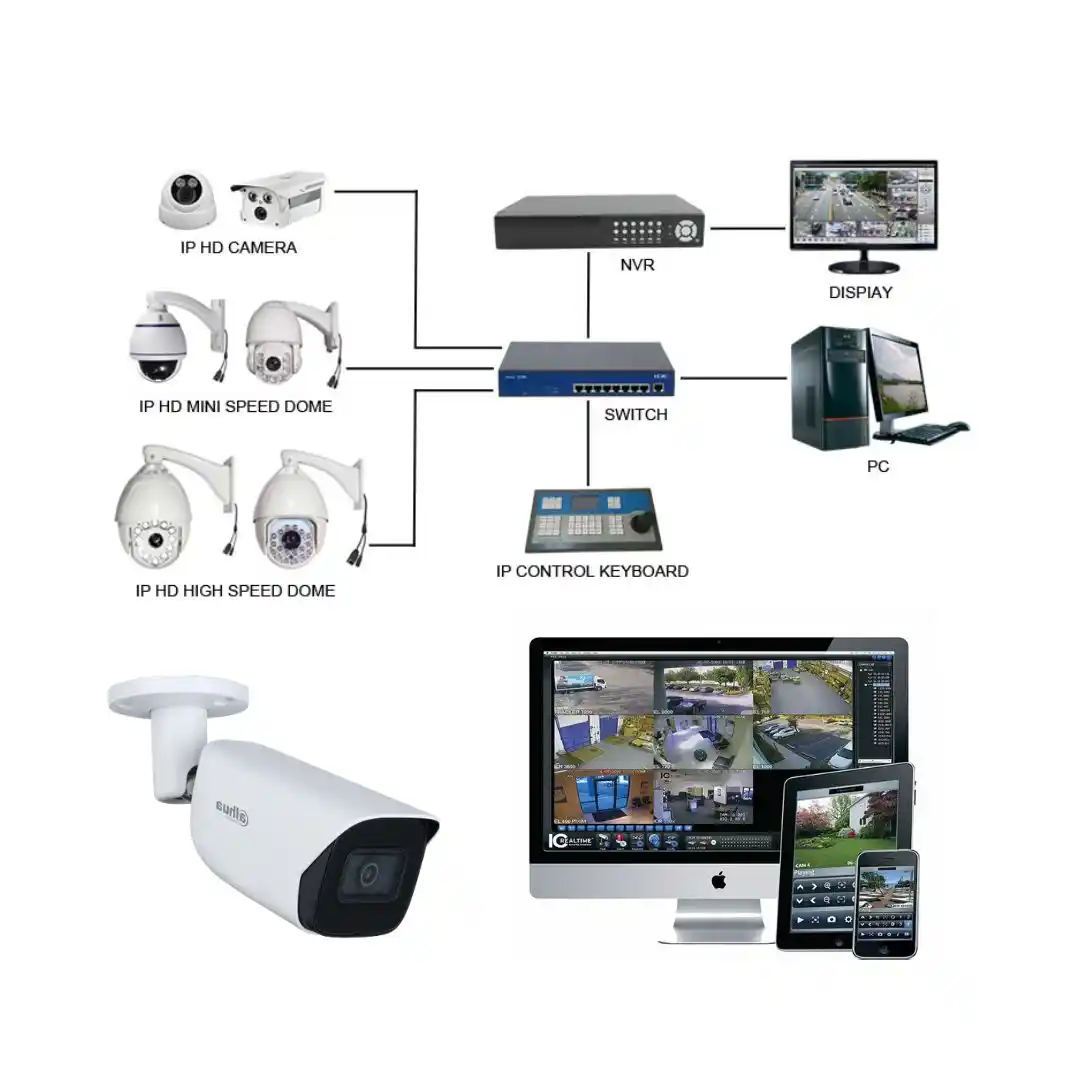
Resolution and Quality:
- Crisp imagery: Set CCTV cameras capture high-resolution video for clear identification of subjects and details.
- Balance storage: Optimize for the highest quality that doesn’t compromise storage capacity.
Frame Rate:
- Motion clarity: Adjust CCTV camera frame rate for smooth playback and accurate depiction of fast-moving subjects.
- Variable rates: Tailor frame rates based on the importance of monitored areas.
Compression:
- Efficient storage: Utilize compression codecs (e.g., H.264, H.265) to reduce data size while maintaining image quality.
Exposure and Shutter Speed:
- Lighting adaptation: Adjust exposure to handle varying light conditions and prevent overexposed or underexposed images.
- Shutter speed: Balance shutter speed to avoid motion blur and ensure sharp images.
White Balance:
- Natural colors: Set white balance to match lighting conditions, ensuring accurate color representation.
CCTV Camera Motion Detection: Increase CCTV Camera Configuration
Incorporating motion detection and analytics into your CCTV camera configuration greatly enhances the effectiveness of your CCTV camera system in Dubai. These features allow for intelligent monitoring, reducing false alarms and providing actionable insights. Here’s how to optimize motion detection and analytics in your CCTV camera setup:
Motion Detection Settings:
- Sensitivity Adjustment: Fine-tune the sensitivity level to detect significant movements while ignoring minor ones like swaying trees or changing lighting conditions.
- Area Selection: Define specific areas within the camera’s view where you want motion to trigger alerts. This helps minimize false alarms from irrelevant movement.
Advanced Analytics:
- Object Tracking: Implement object tracking to follow subjects across the camera’s view. This is particularly useful in areas with high foot traffic.
- Line Crossing Detection: Set up virtual tripwires or boundaries to trigger alerts when objects cross specified lines, such as entry points or sensitive zones.
- Intrusion Detection: Define areas where unauthorized entry is likely and receive alerts when objects or people enter those zones.
- People Counting: Utilize analytics to count the number of people entering or exiting specific areas, aiding in crowd management and security planning

Remote Access and Storage: Increase CCTV Camera Configuration
Enabling remote access and implementing effective storage solutions are pivotal aspects of optimizing your CCTV camera configuration. These components enhance accessibility, flexibility, and data security in your CCTV camera system. Here’s how to maximize remote CCTV camera access and storage capabilities:
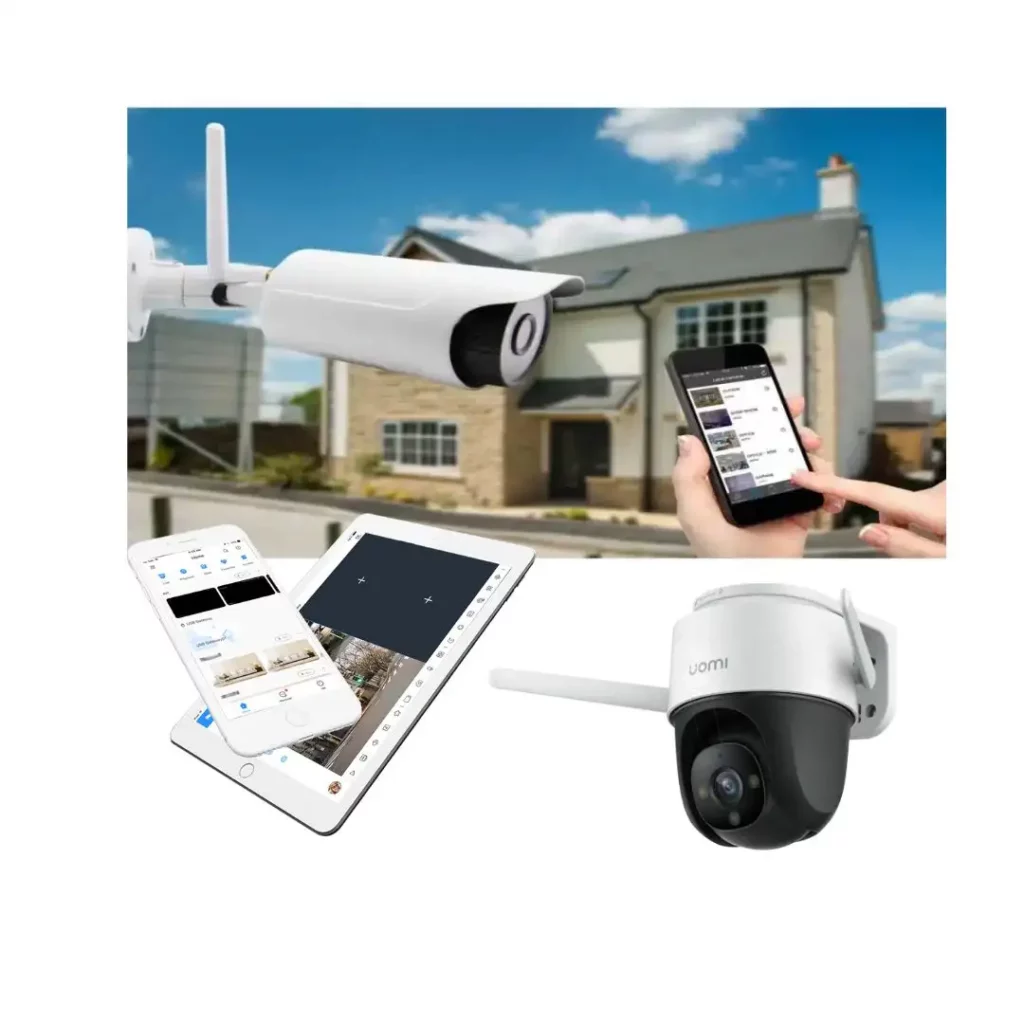
Remote Access:
- Network Configuration: Set up a secure network infrastructure with firewalls, encryption, and strong passwords to prevent unauthorized access.
- VPN (Virtual Private Network): Implement a VPN for encrypted remote connections, ensuring data privacy and security.
- Mobile Apps and Web Interfaces: Utilize dedicated mobile apps and web interfaces provided by your camera manufacturer or video management system (VMS) to access live feeds and recorded footage remotely.
Cloud Storage:
- Off-site Data: Opt for cloud storage solutions to store critical footage off-site, safeguarding against on-site damage or theft.
- Scalability: Cloud storage offers the flexibility to scale storage space according to your needs without investing in additional hardware.
- Data Retention Policies: Define retention policies to automatically manage the duration of footage storage in the cloud.
On-site Storage:
- Network Video Recorder (NVR): Employ NVRs to record and store video footage locally, providing immediate access to recorded content.
- DVR (Digital Video Recorder): For analog CCTV cameras, use DVRs to store and manage video recordings.
Hybrid Storage Solutions:
- Redundancy: Combine both on-site and cloud storage for redundancy, ensuring data recovery in case of local hardware failure or other emergencies.
- Critical Events: Store critical events locally while using cloud storage for routine recordings, optimizing resource allocation.
Bandwidth Considerations:
- Bandwidth Management: Configure cameras and network settings to manage bandwidth consumption, especially in remote viewing scenarios.
- Quality Settings: Adjust resolution and frame rates for remote access to balance image quality and bandwidth usage.
Data Encryption and Security:
- Encryption Protocols: Implement encryption protocols like HTTPS or SSL to protect data during remote transmission.
- Two-Factor Authentication (2FA): Enforce 2FA for added security, requiring an additional verification step to access remote feeds.
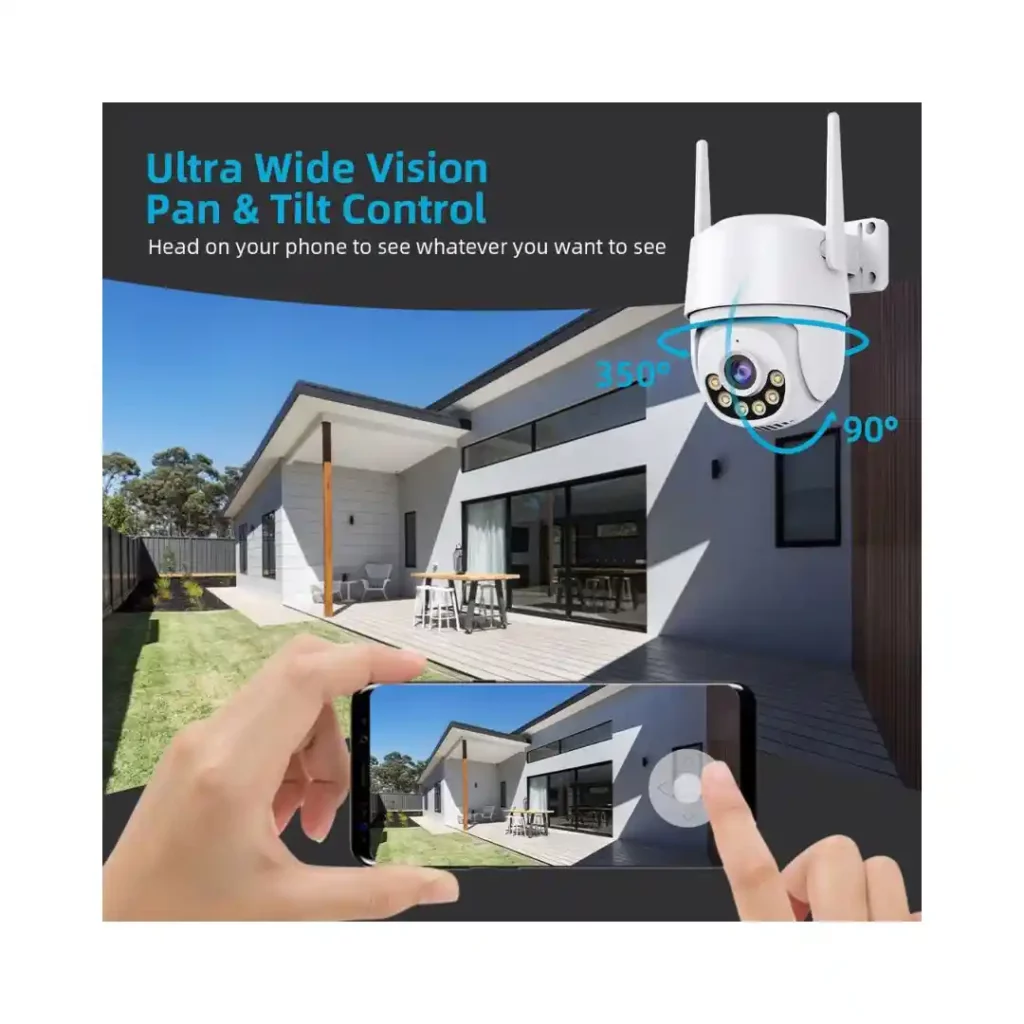
Need Free CCTV Camera Configuration Consultant
CCTV camera installation Dubai offers a free consultant.
Our services help you identify and address your security concerns.
Contact us today to schedule your consultation and protect what matters most.
CCTV Camera Networking: Secure Your CCTV Camera Configuration
Creating a solid network infrastructure for your CCTV cameras is crucial for seamless communication, data transmission, and remote access. Implementing proper networking practices ensures that your CCTV camera system operates reliably and securely. Here’s how to effectively set up CCTV camera networking:

Network Design and Planning:
- Network Topology: Choose a topology (e.g., star, ring) that suits your camera distribution and connectivity requirements.
- Bandwidth Considerations: Calculate bandwidth needs based on the number of cameras, resolution, frame rates, and remote access demands.
IP Addressing and Subnetting:
- IP Allocation: Assign static IP addresses to cameras for consistent identification and ease of management.
- Subnet Segmentation: Segment the network into subnets to isolate cameras, enhancing security and reducing broadcast traffic.
Quality of Service (QoS):
- Prioritization: Implement QoS to prioritize CCTV camera traffic, ensuring smooth video transmission even during periods of high network activity.
Network Equipment:
- Switches and Routers: Use managed switches and routers to enable traffic control, VLAN segmentation, and secure configurations.
- Power over Ethernet (PoE): Choose PoE switches to simplify camera installations by providing power and data over a single cable.
CCTV Camera Privacy: Ethical CCTV Camera Configuration
When CCTV cameras configuration, it’s crucial to align your setup with compliance regulations and privacy standards to ensure ethical surveillance practices and respect individuals’ rights. By adhering to these principles, you create a balanced and responsible surveillance environment. Here’s how to address CCTV camera privacy in your CCTV camera configuration:
Legal Compliance:
- Local Regulations: Familiarize yourself with local and national laws related to surveillance, data protection, and privacy.
- Permits and Notifications: Obtain necessary permits and licenses if required, and inform individuals when their actions are being monitored.
Data Protection and Privacy:
- Purpose Limitation: Clearly define the purpose of surveillance and ensure it aligns with legitimate security objectives.
- Data Minimization: Collect and retain only the necessary data relevant to security concerns, minimizing the collection of personal information.
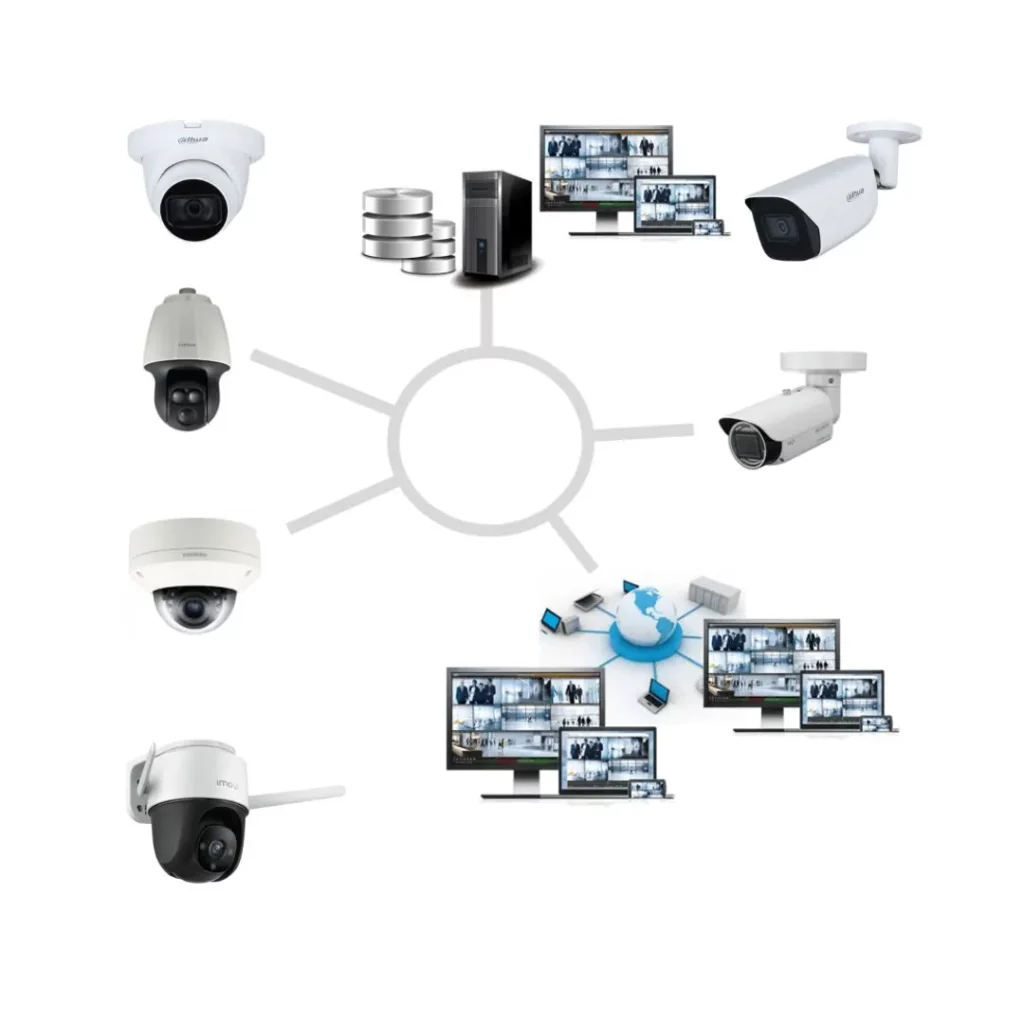
IP CCTV Camera Configuration
Configuring IP (Internet Protocol) CCTV cameras involves setting up a networked CCTV camera system that offers advanced features and remote accessibility. IP cameras use your existing network infrastructure to transmit video data, enabling efficient monitoring and management. Here’s a step-by-step guide to IP CCTV camera configuration step by step:
Network Planning:
- Assess Infrastructure: Review your network’s capacity and layout to determine where IP cameras will be placed.
- Bandwidth Calculation: Estimate the required bandwidth based on the number of cameras, resolution, and frame rates.
Camera Selection:
- Choose IP Cameras: Select cameras that support IP connectivity and meet your resolution and feature requirements.
- Wired or Wireless: Decide between wired and wireless IP cameras based on your network setup and coverage needs.
IP Address Assignment:
- Static IP Addresses: Assign a unique static IP address to each camera to ensure consistent identification and accessibility.
Camera Installation:
- Physical Placement: Mount cameras in strategic locations, ensuring an unobstructed view of the monitored area.
- Power Supply: Connect cameras to power sources, using Power over Ethernet (PoE) switches or separate power adapters.
Network Configuration:
- Switches and Routers: Connect cameras to managed switches and routers for efficient data transmission and control.
- Virtual LAN (VLAN): Set up VLANs to isolate camera traffic from other network traffic for enhanced security.
Hidden CCTV Camera Configuration
Hidden CCTV camera configuration is employed for discreet surveillance without drawing attention to the presence of cameras. This approach can be useful in sensitive environments, investigative scenarios, or areas where overt cameras might be tampered with. Here’s a guide on how to set up hidden CCTV cameras effectively:
Camera Selection:
- Choose Miniature Cameras: Opt for compact and discreet cameras that can easily blend into the environment.
- Pinhole Cameras: Utilize pinhole cameras with tiny lenses that can be concealed behind objects or openings.
Camera Placement:
- Concealed Locations: Position cameras in inconspicuous spots such as within fixtures, behind decorative items, or inside objects.
- Unobstructed View: Ensure that the camera’s lens has an unobstructed view while remaining hidden.
Disguised Enclosures:
- Camouflage: Use enclosures that mimic everyday objects like smoke detectors, electrical outlets, or wall clocks.
- Custom Enclosures: Craft custom enclosures that match the surroundings to conceal the camera effectively.
Wiring and Power:
- Hidden Wiring: Conceal wiring within walls, ceilings, or cable ducts to prevent suspicion.
- Power Source: Ensure discreet power sources, such as hidden power outlets or battery packs.


